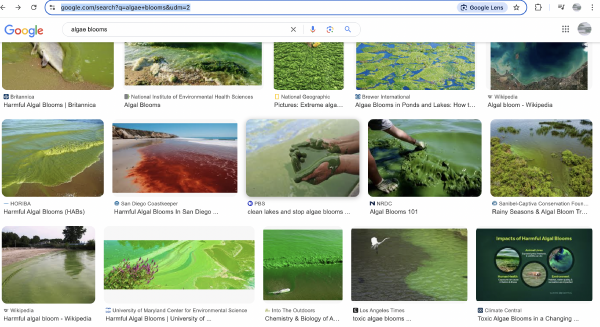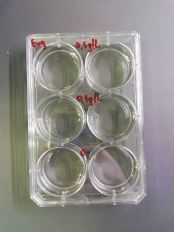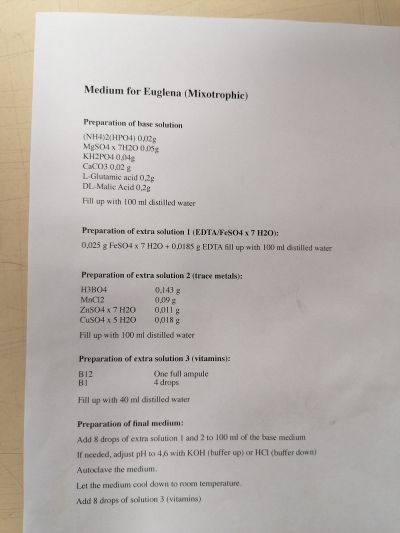No edit summary |
Tag: 2017 source edit |
||
| Line 54: | Line 54: | ||
One of the outcomes, a video piece, features an aquatic ecosystem in contact with human-built objects. As some objects are ignored by fish communities, this work suggests that different species have special needs and preferences that are not necessarily easily foreseen by humans. The researcher explores the optimized environments for the aquatic communities but does it with a limited technical tool, a video camera. | One of the outcomes, a video piece, features an aquatic ecosystem in contact with human-built objects. As some objects are ignored by fish communities, this work suggests that different species have special needs and preferences that are not necessarily easily foreseen by humans. The researcher explores the optimized environments for the aquatic communities but does it with a limited technical tool, a video camera. | ||
Latest revision as of 13:45, 25 November 2024
Inspiration for the course
Algae blooms
Algae blooms in aquatic systems are primarily driven by nutrient pollution from agricultural runoff and wastewater, along with warm temperatures and stagnant water, which create ideal growth conditions. Increased light availability further promotes blooms, while the decomposition of dead algae can deplete dissolved oxygen, leading to hypoxic conditions harmful to aquatic life. Some blooms produce toxins, impacting food safety and water quality, while also disrupting ecosystems and reducing biodiversity.
Sci-fi film
Amfibian Man by Vladimir Chebotaryov (1961), https://www.youtube.com/watch?v=hp92l6eh2FA
A Soviet science fiction romance film Amphibian Man (Russian: Chelovek-amfibiya) (1962), directed by Vladimir Chebotaryov and Gennadi Kazansky. The film tells the story of Ichthyander, a young man surgically altered by his father to survive underwater. While the film may not evoke far-reaching visions for adults, for the PI, who saw it as a child, it sparked vivid fantasies of water as an additional realm to enrich and diversify one’s life.
What is an acquatic ecosystem
Through the water cycle different types of freshwater bodies are formed, such as glaciers, rivers, lakes, ponds and many more. The different physical-chemical conditions determine which organism can thrive in that acquatic environment, and consequently change it through its biological activity.
We will concentrate on pond like ecosystems. Thereafeter we understood how these small still water bodies work from an ecological perspective.
Tihs lead us to reflect on how to evince informations from a system. So we put together a small experiment and check how biotic and abiotic factors interact.
Experiment
Primary producers are said to be affected by nutrients in form of salts available in their environmnet. Let's test this.
We took a Protista, Euglena viridis and a Cyanobacterium, Klebsormidium flaccidum and will check how do they react to phospate starvation.
We set 3 pairs of cultures for each organism. Each pair got either 0,5g/L, 0,1g/l and 0g/L of potassium phosphate.
The rest of the solution was kept standard
We will monitor how the cultures react to the different conditions and speculate how abiotic factors can impact natural ecosystems.
Medium
We will use a base for the standard Euglena medium, without phosphates, and add different amounts of Ammonium Phosphate, Dibasic (NH4)2HPO4
artistic projects
Under the Water by duo Varvara Guljajeva and Mar Canet (2019)
The work features a series of dye sublimation prints on aluminium showing images produced with a machine learning algorithm. Although this work explores machine-generated visuals from data sets of plastic in the ocean, it does neither question the danger of plastics nor data sets behind AI.
Aurelia 1+Hz / Proto Viva Generator by Robertina Šebjanič (2014)
The work features jellyfish trapped in an (animal unfriendly) simple robotic machine. By employing different sensor mechanisms and aesthetic outputs, the work addresses the possibilities of coexistence of humans, animals and machines. This work converts movements of jellyfish to sound, but does it for visual purposes only without allowing audiences to experience the actual coexistence nor does it listen to the animal.
Fish Architecture – A framework to create Interspecies Spaces by Anja Wegner (2021)
- https://www.scienceopen.com/hosted-document?doi=10.14236/ewic/POM2021.24
- https://www.youtube.com/watch?v=ywnEyO9j9iY
One of the outcomes, a video piece, features an aquatic ecosystem in contact with human-built objects. As some objects are ignored by fish communities, this work suggests that different species have special needs and preferences that are not necessarily easily foreseen by humans. The researcher explores the optimized environments for the aquatic communities but does it with a limited technical tool, a video camera.




